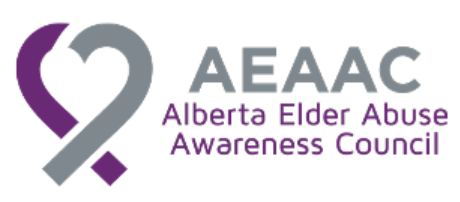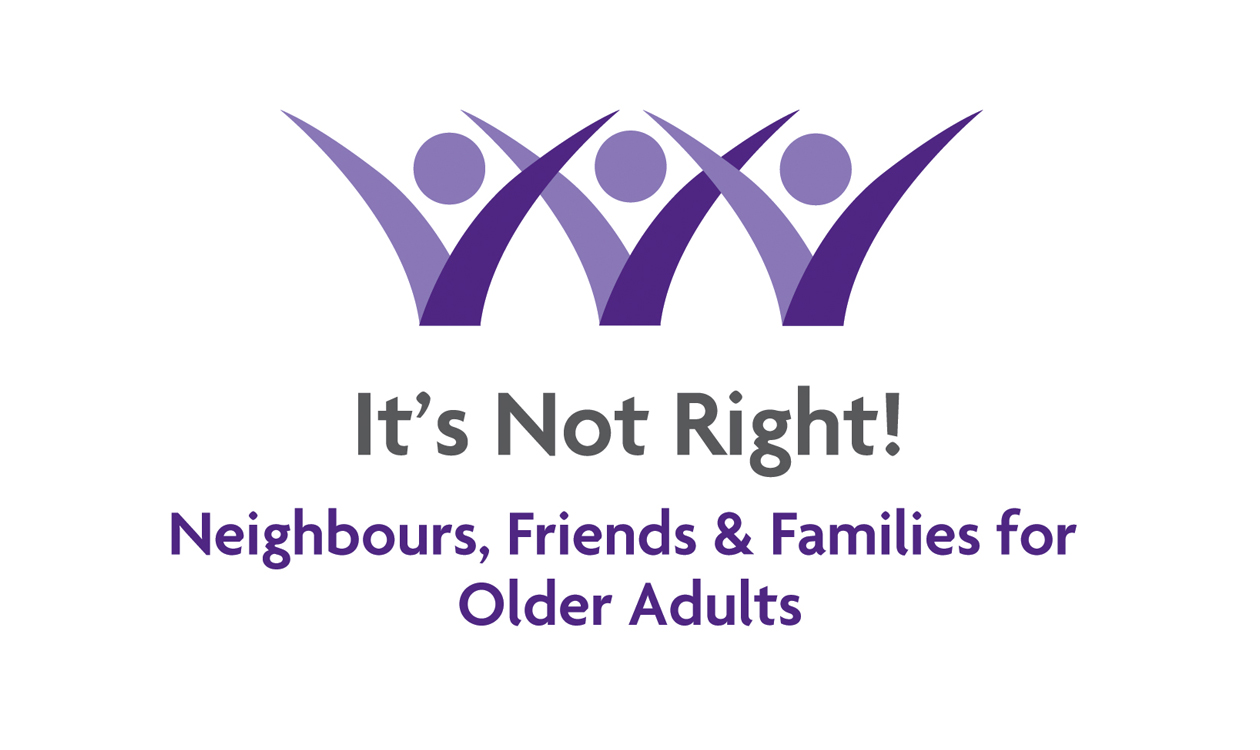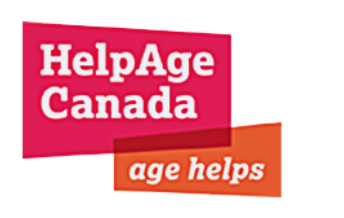Blog
- Details
The following is part of our project “Increasing Access to Justice for Older Adult Victims of Sexual Assault: A Capacity Building Approach”, funded by the Justice Canada Victims Fund.Learn more about this project or consult the full list of resources
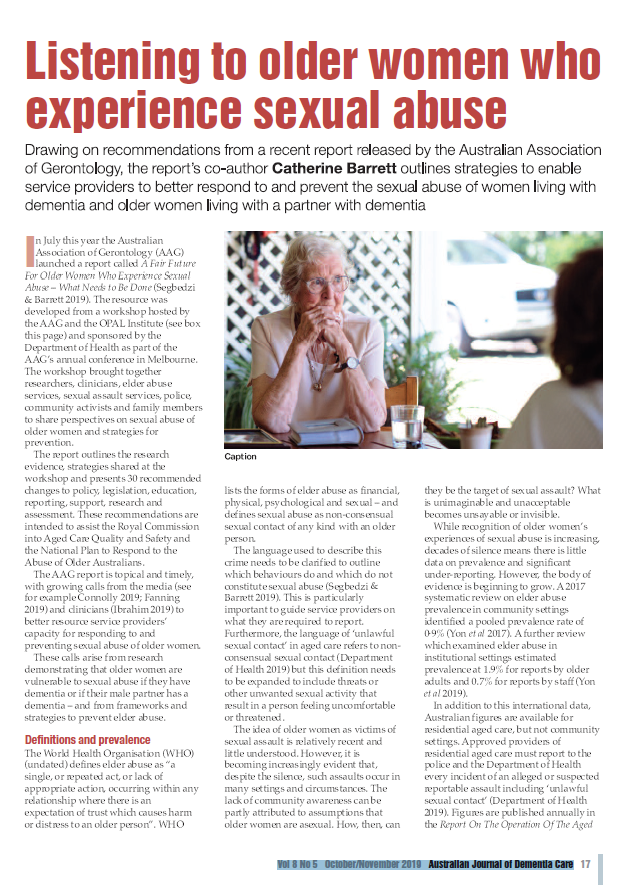
''Drawing on recommendations from a recent report released by the Australian Association of Gerontology, the report's co-author Catherine Barrett outlines strategies to enable service providers to better respond to and prevent the sexual abuse of women living with dementia and older women living with a partner with dementia.''
Click on the image to read the full article
Source: Australian Journal of Dementia Care Vol 8 No 5 October/November 2019
- Details
CALL FOR PARTICIPANTS:
Under-reporting in Abuse of Older Adults in the Prairie Provinces
Are you an older adult who has experienced some kind of abuse – serious harm, disrespect or assault/abuse? We need your views and thoughts on this important issue.
Your participation will include an interview (about 1 hour long) answering questions on this topic. 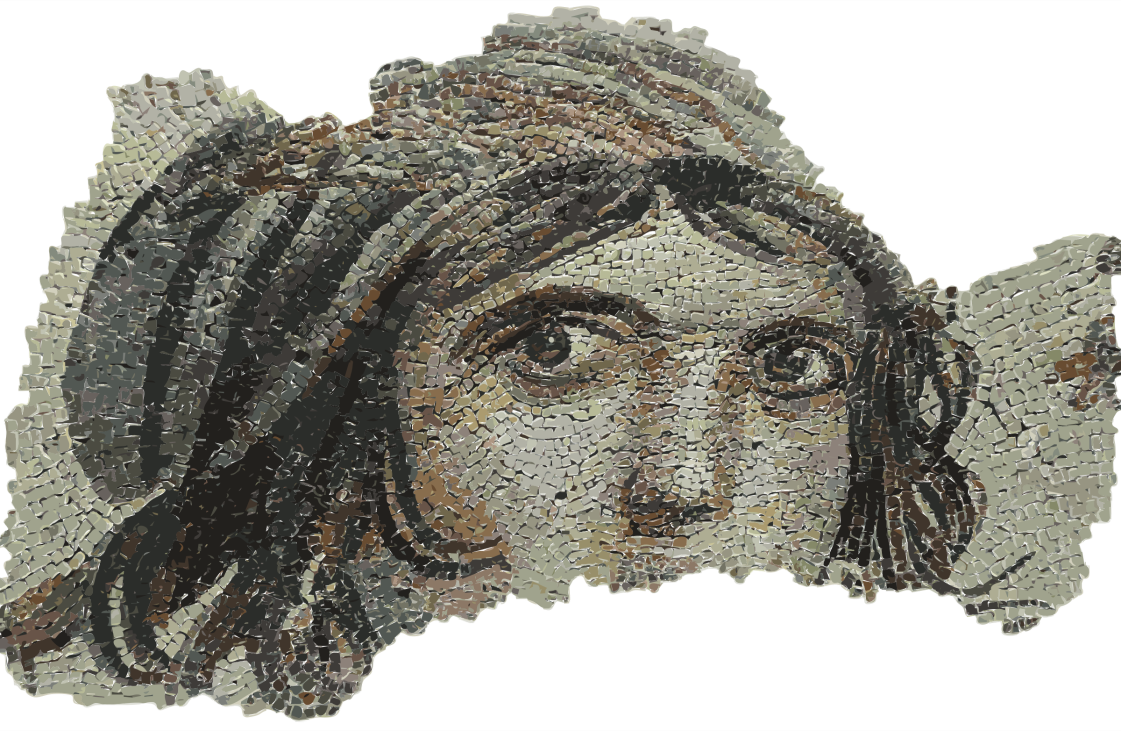
If you are interested in participating in this study, please call our confidential voice mail at: 204-474-7181.
You may email us at:
Principal Investigator: Kerstin Roger (University of Manitoba)
Funded by PrairieAction Foundation
Community Partner: A & Opportunity: Support Services for Older Adults
- Details
By Pam Burns, Seniors Advocate/Outreach Supervisor, St Aidan's Society
In a young and typically family-focused community such as Fort McMurray, our older adult population is easily overlooked. Many children here are growing up without their grandparents, so exposure to those who are aging is sometimes very limited and many people don't understand what it is like to age.
St. Aidan's Society is a local non-profit that provides senior outreach services and works through an age-friendly lens. Part of this work is to bring awareness to aging and the importance of understanding and recognizing the value of those who have lived experience; those who are part of the community and have contributed in so many ways. St. Aidan's Society wanted to create this message and was fortunate enough to find a local company, Neville Video Productions, who shared our passion. It was through their willingness to partner with us at a very affordable rate that allowed us to make this video. Our other partners on this project were an amazing group of local older adults who assisted us with "How do you see aging?".
We hope that it will bring awareness to all age groups, older adults included, that aging is not a problem. We encourage everyone to reshape their views on aging. "
About St Aidan's Society:
Website: St Aidan's Society
Facebook:@staidanssociety
Twitter:@staidansfm
- Details
Annual General Meeting
Thursday, September 19, 2019
10 am to 11:30 am (Pacific Time) / 1 pm to 2:30 pm (Eastern time)
REGISTER FOR THE AGM TODAY
Anyone interested in participation to the AGM must register at the link above.
Once you have registered, you will receive an automated email that will allow you to join the virtual meeting.
ELECTION OF BOARD MEMBERS
- Details
NOTICE
CNPEA Annual General Meeting
Thursday, September 19, 2019
10 am to 11:30 am (Pacific Time)/ 1 pm to 2:30 pm (Eastern time)
On September 19, join us to elect new Board members and hear about our activities and plans for the future.
The meeting will be held via the teleconference platform GotoTraining. Make sure to register at the link below. Space is limited, early registrations are encouraged.
Once you complete your registration, you will receive an automated confirmation email with the teleconference details to join the meeting on September 19.
Our annual report and the list of candidates to the Board will be circulated in September.
Page 25 of 55





